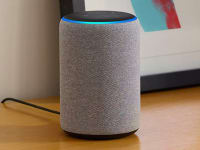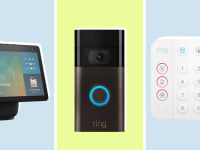8 ways to help keep your smart home safe and secure
It's time to give your smart home a privacy check-up.
Products are chosen independently by our editors. Purchases made through our links may earn us a commission.
Connected gadgets like smart cameras and video doorbells can help bring peace of mind, especially when you’re not at home. But much like other internet-connected devices, smart home products are vulnerable to hackers and security breaches.
Wondering how to secure smart home devices that you currently have or are thinking about purchasing? While you can never be 100% secure with any internet-connected device, there are steps you can take to make sure you’re utilizing the most secure products as well as utilizing security measures like two-factor authentication and data encryption to help keep your private information safe.
Here are eight steps you can when it comes to how to secure smart home devices.
1. Secure your Wi-Fi router
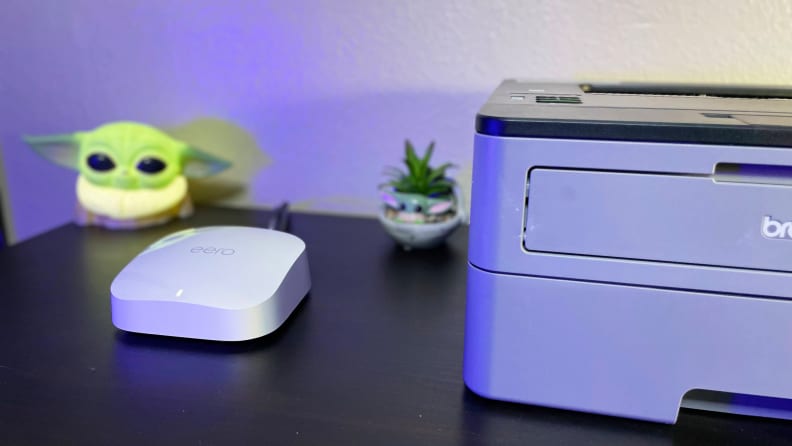
Your Wi-Fi router should be password-protected and have a strong level of encryption.
Whether it be a smart speaker or smart bulb, all of your smart home devices need a secure way to connect to Wi-Fi and it starts with your home’s internet router.
Wireless routers offer two basic types of encryption WPA (Wi-Fi Protected Access) and Wired Equivalent Privacy (WEP). When shopping for a Wi-Fi router, look for a model that offers WPA2, one of the strongest encryption levels for wireless networks.
If you already have a router, check to see what kind of encryption it offers. Some older models offer WEP encryption only, which may leave you vulnerable to hacking attempts.
Change the password and default name of the router to something unique (don’t include any personal details like your last name or your street).
Doing so makes it harder for hackers to find out the details of your router’s make and model number, and is one more layer of protection between your smart home and cybercriminals.
Also, make sure to turn off any remote management features (typically used for tech support from the manufacturer) and keep the firmware on your router as up-to-date as possible.
2. Use strong passwords (and don’t reuse them)
Smart homes are made up of multiple connected devices that work across various apps. While you may find it more convenient to reuse the same password across numerous accounts, it’s a risky move that can make your smart home vulnerable to security threats. It’s not uncommon for hackers to expose user login credentials online, and it only takes once for your password to be exposed.
One of the best tips when it comes to how to secure smart home devices at home is to use a password that's hard to guess, lengthy, and composed of multiple upper- and lowercase letters, numbers, and other characters required. Most importantly, your passwords should be unique to each account and never reused.
With a password management tool, you can securely save and store a large volume of passwords without having to remember every single one of them.
Password management tools can also help you reset exposed passwords and create hard-to-guess new ones. It’s much easier to reset and change a password for one account than it is across multiple accounts.
3. Enable two-factor authentication and other security settings
Two-factor authentication (2FA) is one of the last lines of defense to keep hackers out of your account if your password is stolen. When an unrecognized device attempts to log into your account and 2FA is turned on, a multi-digit one-time code is sent via text, email, or as a push notification directly to your phone or tablet.
The person trying to gain access needs this code to log into your account. Additionally, you’ll want to set up email notifications for any new devices attempting to log into your account whenever possible. If you don’t recognize the device, or are sent a verification code unprompted, change your password immediately.
Additionally, make sure the phone or tablet you’re using to control your smart home has security tech like passcodes, Face ID, or fingerprint ID enabled (the latter being the most secure). This prevents unauthorized access to your smart home if your device gets lost or stolen.
4. Look for devices with enhanced privacy features
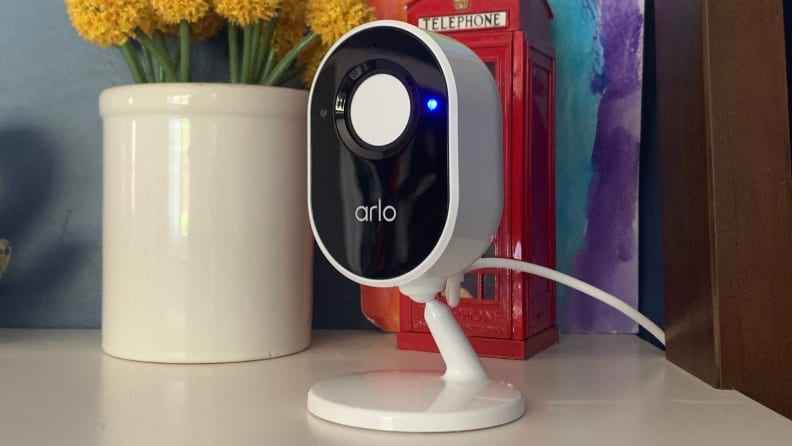
The Arlo Essential Indoor Camera's moveable shield is a useful feature that helps protect your private moments.
When buying a smart home device, especially one with a camera, there are some special security features to look for. Cameras with privacy shutters add a visual layer of protection from possible unwanted eyes who gain access to your live stream, but this feature isn’t as widely available as you might think.
Arlo's indoor wireless camera is one example of a home security camera designed with a built-in privacy shutter that blocks the recording when enabled.
Similarly, there are physical privacy shutters on some camera-enabled smart displays like Amazon’s Echo Show 10 and Show 5, while others like Google’s Nest Hub Max don’t include one.
This feature is something to consider when purchasing any smart home (or other connected) device with a built-in camera.
Also, make sure to review each device’s privacy settings. Some smart home gadgets come with privacy and security features enabled by default.
These include features mentioned above like two-factor authentication; email, text, or push notifications when a new device logs on; and video and data encryption. Review each setting closely and adjust as needed.
5. Use a VPN for remote access
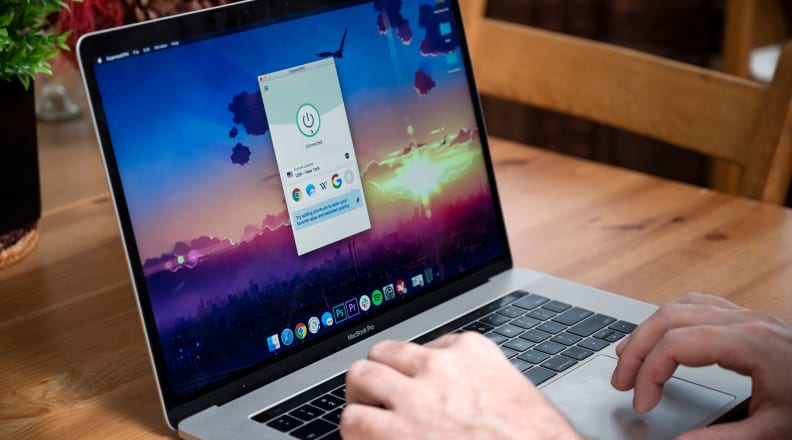
A VPN can help keep others out of your personal data when you are connected to an open Wi-Fi network.
The beautiful thing about many smart devices is that you can control them from anywhere. But, you need to be mindful of which wireless networks you’re using to manage your smart home from afar. Public Wi-Fi networks, as you might access at the grocery store or coffee shop, are often unsecured and can easily be hacked.
To manage your smart home via public Wi-Fi, a VPN (virtual private network) is recommended. They offer a secure, private connection that encrypts your internet data from others.
6. Keep your devices up-to-date
Over the lifespan of your connected devices, various firmware updates will be deployed to keep everything running smoothly. These updates typically include privacy updates like increased device security, as well as bug fixes to improve performance and stability.
Checking for and installing firmware updates regularly ensures that your smart home gadgets are running the latest software to stay secure.
7. Factory reset old devices before you give them away
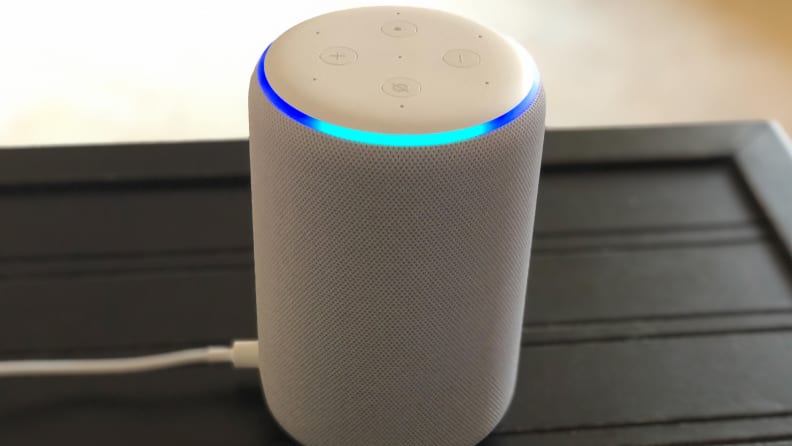
Getting rid of old smart home devices like smart speakers or security cameras? Make sure to factory reset them first.
You may consider selling or giving away old and unused smart devices, but make sure to restore everything to factory settings first. This ensures that your information is completely wiped from the device, paving the way for someone else to use it without access to any of your private details.
Restoring factory settings should also remove it from your companion app account but it's always a good idea to double-check.
8. Be aware of the risks
The bottom line is that there is always a hacking risk involved when you invite any internet-connected gadget into your home. You have to give up some amount of trust for the convenience of using internet-connected security cameras, voice-activated speakers, and other smart home devices.
That said, the steps above can help when it comes to understanding how to secure smart home devices, adding peace of mind that you’re doing all you can to assure nobody is accessing your cameras or listening in when they shouldn’t be. Our smart home buying guides can help you make informed decisions about the best products to invite into your growing smart home while keeping your privacy top of mind.

